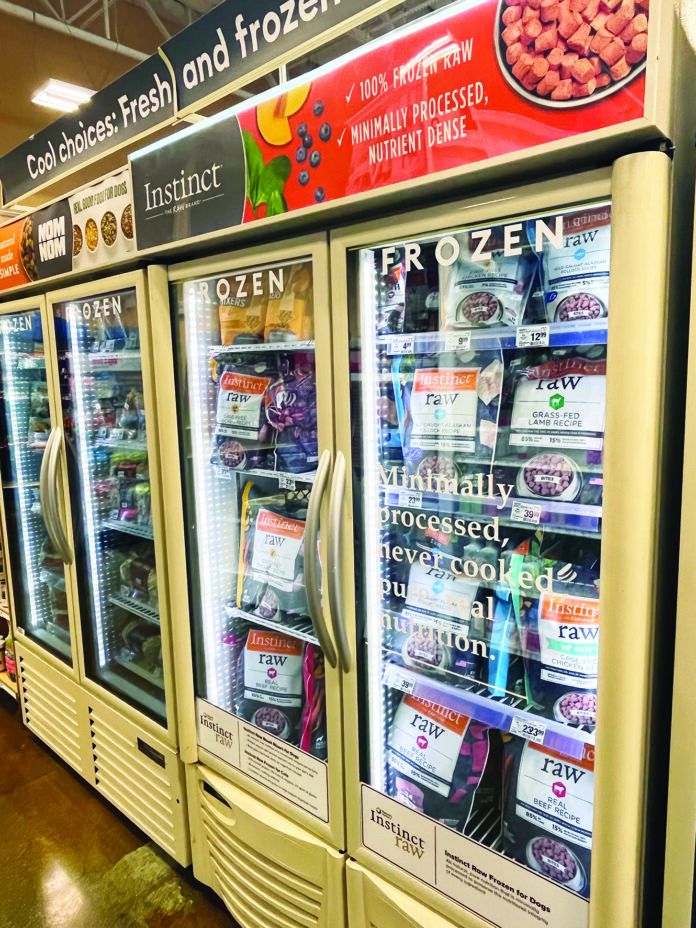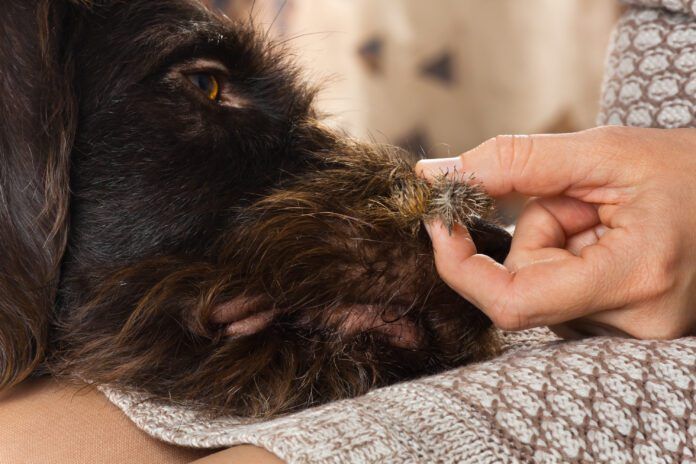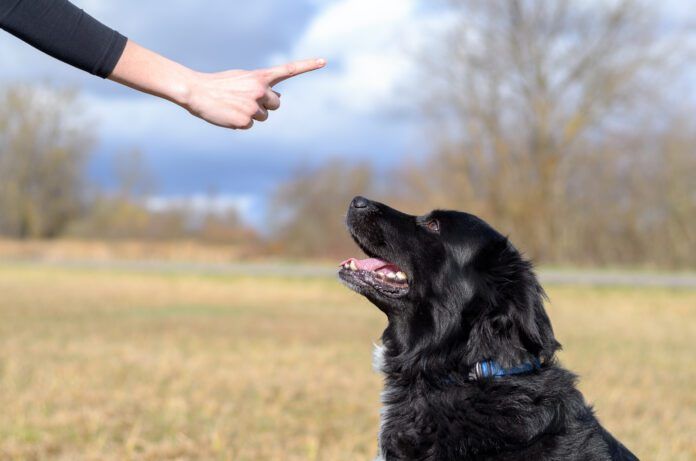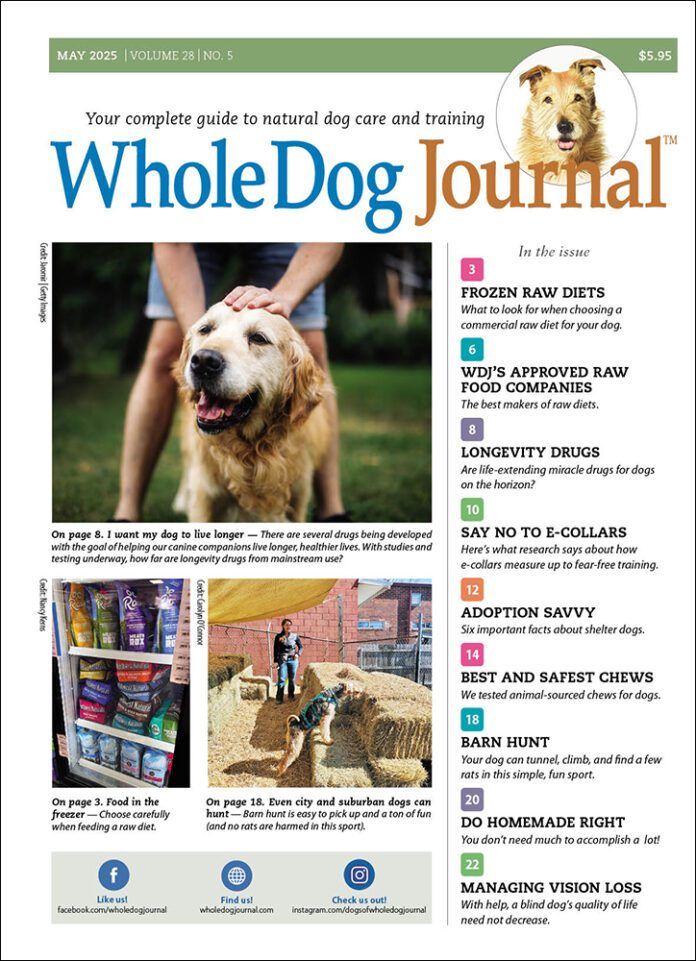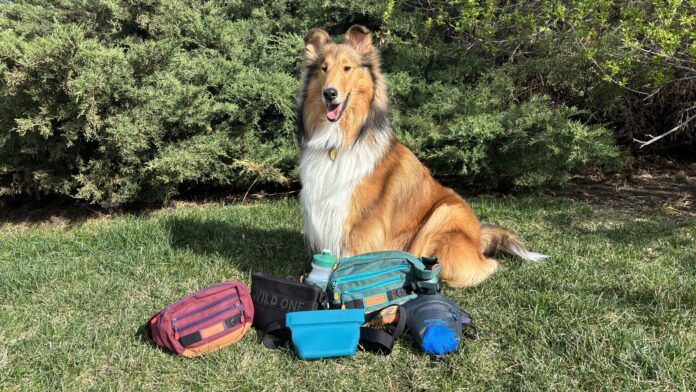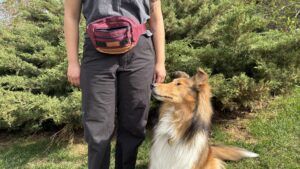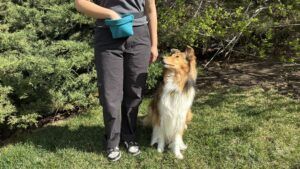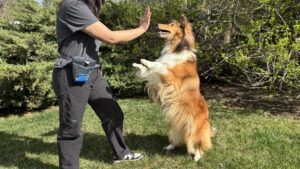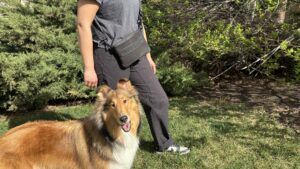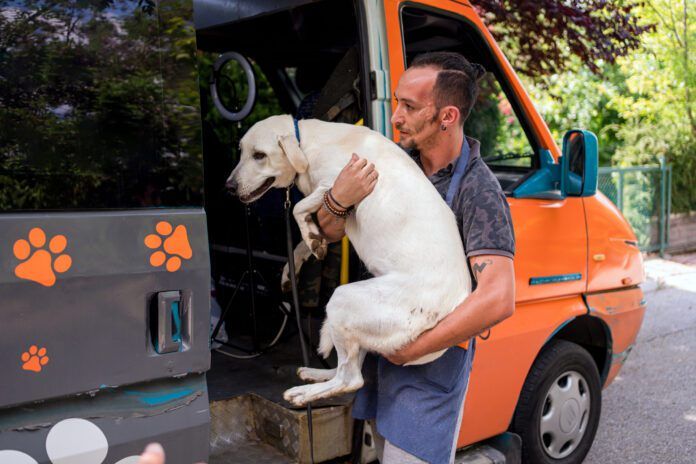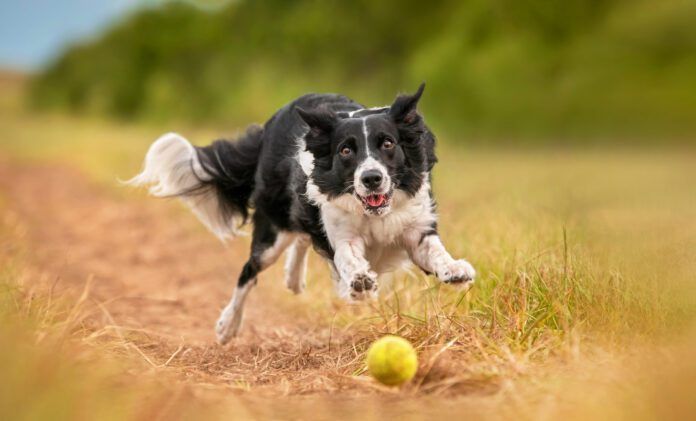The increasing number of glass-fronted freezers appearing in pet supply stores is a clear indication that frozen diets made of fresh, whole-food ingredients are increasingly popular with dog owners. In past years, we reviewed both raw frozen and cooked frozen diets for dogs at the same time, but the expansion of both categories calls for each to be reviewed separately! In this article, we’ll look at products that are made with raw meats and other raw ingredients; next month, we’ll look at cooked fresh-food diets that are sold frozen or refrigerated.
Why Raw?
Dogs evolved eating diets comprised mostly of raw meat, bones, organs, and other tissues from animals they killed or found dead; wild canids and feral dogs, of course, still do. However, for the past 11,000 years or so, dogs have also shared our food—or at least, our food scraps. With the advent of the dog-food industry about 100 years ago, scraps from the human-food industry were turned into commercial dog food, which was fed to an ever-increasing percentage of dogs.
But a certain number of people continued to feed their dogs diets comprised largely of meat, as well as bones and other parts of slaughtered animals that humans don’t commonly eat. This was probably limited to ranchers who raised animals for meat, sled-dog mushers, racing Greyhound enthusiasts, and other old-fashioned dog owners, until an Australian veterinarian, Dr. Ian Billinghurst, brought raw-feeding back into style.

Dr. Billinghurst’s 1993 book, Give Your Dog a Bone, made a compelling case for the benefits of an “evolutionary diet” for dogs. Billinghurst sought to formulate diets containing all the nutrients that modern science tells us dogs require, but with the types of ingredients that early canines would typically consume: mostly raw, meaty bones, supplemented by smaller amounts of organ meat, fruit, vegetables, and eggs.
Dr. Billinghurst and later proponents of evolutionary-type diets cite a long list of the potential benefits of feeding dogs with a diet comprised mainly of raw meat: dogs with better overall health and vigor, fewer allergies and digestive problems, cleaner teeth and fresher breath, nicer coats, improved reproduction in breeding dogs, and greater longevity and soundness.
Various traits of a raw diet have been credited with these benefits, including the fact that raw foods are biochemically complex with bioactive enzymes and compounds, higher in antioxidants such as vitamin C, vitamin E, and some flavonoids; and that they lack cooking toxins such as acrylamides and nitrosamines, which are carcinogens and can cause oxidative stress.
The superiority of raw foods to maintain canine health, however, is anecdotal; sound, validated, generational studies comparing the health of raw-fed dogs to a population of kibble-fed dogs just don’t exist. But it’s undeniable that some dogs do great on these diets! Many raw-food diet proponents stumbled upon this style of feeding their dogs after years of struggling with a dog who failed to thrive on every other type of diet—and there is no convert as dedicated as someone whose dog was sickly and is now well on a new diet.
Diverging Raw Strategies
Commercial raw frozen diets are all made with a preponderance of raw meat. If other ingredients are used, they tend to be whole—not a food “fraction” or by-product—and either raw or very lightly processed. Certified organic, grass-fed, locally sourced, and/or humanely raised ingredients are much more commonly found in this diet category than in conventional kibble and canned diets. But that’s where the similarities between these diets end.
Over the past 30-plus years since Dr. Billinghurst first popularized raw-food diets for dogs, several divisions within the raw-feeding camp have developed. Some raw feeders promote the superiority of “whole prey” diets—those that attempt to mimic the proportions of meat, bone, and organs consumed by wolves—and disparage any other raw diets. There are factions that include grain in their formulations, and others for whom grain is anathema. Some use ground raw bones as the only calcium source they will permit in their dogs’ diets; others are OK with some other calcium source. And then there are the purists who formulate diets with only whole-food ingredients, and those who feel that no dog diet is complete without the addition of a vitamin/mineral supplement.
The biggest division, however, might be the one between the folks who are comfortable with the potential for feeding dogs diets that may be contaminated with potential food-borne pathogens and those who won’t take that risk.
Food Safety Questions
There are a number of pathogens that can be present in and/or on meat, including Salmonella spp, Campylobacter spp, Clostridium spp, Escherichia coli, Listeria monocytogenes, and enterotoxigenic Staphylococcus aureus.
In more conventional types of pet food, these pathogens are usually rendered harmless through cooking—unless the heat-based process, whether it be extrusion, baking, or retort (canning) is inadequate, or the food is contaminated after it is cooked (for example, when dry foods are coated with oil after cooling). The above-named organisms in raw animal-source proteins can cause illness in animals and humans in their household.
But cooking isn’t the only way to kill food-borne pathogens. There are a few technologies that can kill pathogens in raw foods without heat.
Most of the largest raw-diet companies use one of these cooking-alternative, bacteria-killing technologies, such as irradiation or high-pressure processing (HPP). But a few companies are raw-diet purists; they typically explain that they rely on superior sources of animal proteins, strict adherence to good manufacturing practices, and product testing to ensure that their products contain no pathogens.
Watch Out for High Fat Levels
Raw frozen diets tend to contain extremely high amounts of fat. And here’s a wrench in the works for conscientious dog owners who check the product labels, looking for high fat levels: Remember that the guaranteed analysis on the product label lists the minimum amounts of protein and fat. The product may actually contain much higher levels than what’s listed there. Argh! This is one of the reasons why we suggest that you ask companies for the amount of fat their products have been confirmed by testing to contain—again, not just the minimum amount in the guaranteed analysis, but the actual amount in the products.
At the very least, pay attention to the caloric density of the food—the number of calories per ounce or kilogram—in the products you’re considering. The higher the number, the more fat in the product.
Primal Frozen Raw
Things we like:
- Six single-source animal protein formulas (plus one formula with two protein sources)
- HPP ensures safety
- All produce used is organic, no synthetic supplements added
- Complete nutrient analyses for every product on website
Runners up:
- Stella and Chewy’s Frozen Raw
- Tucker’s Raw Frozen
Maev Raw Dog Food
Things we like:
- Products are human-grade (not made with just some human-grade ingredients)
- Lowest levels of fat we’ve seen in this category (chicken variety lists minimum of 3.5% fat vs. as much as 11% in competitors’ products)
Runners up:
- Viva Raw (Min 6.5% fat in chicken variety)
- OC Raw (Min 6% fat in chicken variety)
How We Choose
Here’s what we recommend looking for when choosing a raw frozen diet for your dog:
- A “kill step.” We’ve seen credible evidence that dogs can (and often do) consume Salmonella, the most commonly found pathogenic bacteria in our meat and poultry supply, without developing illness. But given the state of the nation’s commercial food-processing oversight (not good), and reports of increasing populations and virulence of antibiotic-resistant pathogens, we recommend buying only those raw-diet products that have been subjected to pasteurization of some kind.
We’ve toured a facility where raw meats for dog food (and cooked meats for human food) were being treated with HPP, and we feel good about the safety and value of this process.
- A nutritional adequacy claim confirming that the product is a complete and balanced diet for dogs of your dog’s life stage (adult maintenance or growth). For example, “This product was formulated to meet the nutritional levels established by the AAFCO Dog Food Nutrient Profiles for all life stages including growth of large size dogs (70 lbs. or more as an adult).” We do not recommend diets that are intended only for “intermittent or supplemental use,” unless the product is being used as a meal “topper.”
- A complete nutrient analysis for each product. Ideally, it’s clear that the reports are the results of laboratory analysis of the products, rather than the nutrient levels expected from a software analysis of the product formula.
- Fat levels that are not excessive. We recommend products with protein levels that are about twice the levels of fat for most dogs. Foods that contain more fat than protein should be avoided—especially for individual dogs and breeds that are subject to pancreatitis (for more about this risk, see “Pancreatitis in Dogs”).
Worth a Try

In our experience, the most enthusiastic proponents of these diets are people whose dog had serious health problems—such as allergies, which often manifest in dogs as vomiting and/or diarrhea, chronic ear infections, and/or itching that causes the dog to excessively scratch or lick himself—that cleared up entirely when they tried a raw diet. It’s hard to be anything less than evangelical when one of these diets has just cured your dog of a condition that has plagued him for months or years.
If you’re going to try feeding a raw diet—perhaps in an effort to resolve some ongoing health issue for your dog—start slowly. Convert your dog to his new diet gradually, mixing some of the raw food with his usual food in increasing proportions, watching carefully for any signs of digestive distress (such as vomiting, diarrhea, blood in the stool, or lack of appetite).
Finally, use particular caution with dogs who are prone to pancreatitis—and retreat to your dog’s former diet if you observe signs of dietary intolerance.
Whole Dog Journal’s Approved Raw frozen Dog Foods
The table below lists companies that manufacture complete and balanced diets for dogs that contain raw meat and other raw food ingredients.
Some are formulated to emulate a “prey model” style of feeding, with the inclusion of muscle and organ meats and few if any carbohydrate sources. Others include fruit, vegetables, and/or grain. As always, you need to check to make sure that all the ingredients in a food that you are considering for your dog are foods that he is not allergic to or intolerant of.
Please note that in this food category in particular, you should also look at the guaranteed analysis to make sure the diet has an appropriate amount of fat and protein for your dog, as many of these diets are fairly high in fat.
Notes about the data in each column:
Company: Products are listed alphabetically.
Product form: If the company used a term to describe the shape of the product or its package, we’ve used their term. Otherwise, we’ve tried our best to describe how the food is formed or packaged.
How/Where Sold: Smaller companies tend to take orders and ship product directly to their consumers; larger companies may sell their products this way but may also be available in pet supply stores or via third-party online retailers such as Chewy.
Human-Grade: One hundred percent of the ingredients in products with this designation must be human-edible, and these products must be made in a human-food manufacturing facility that is subject to the same inspections and licenses as any human-food facility.
kill step: Since all these products are raw, one should understand that, unless they are subjected to some sort of “kill step,” they are potentially contaminated with pathogens (such as Salmonella) that are commonly found in the meat supply—yes, even the human-food meat supply. (It’s understood that meats that are sold for human consumption will be cooked, which will kill those pathogens, and so meat producers are allowed to sell a certain percentage of pathogen-contaminated meat.)
We have listed whatever information we could find on the company websites and product labels about whether their products are subjected to a pathogen-killing process of any kind.
“None” in this column means that the company is open about their choice to not use a kill step. HPP is “high pressure processing,” also known as “high pressure pasteurization.” “Not published” means we were unable to find a reference to any kill step that is used by the company. This doesn’t necessarily mean that no kill step is used (although it might); it might be that, in an effort to avoid scaring off raw-food purists, the company does not want to draw attention to their pathogen-control process.
First 10 ingredients of company’s chicken variety: Since nearly all companies who make raw dog food make a chicken variety, we’ve chosen that product from each company to compare. If the company makes more than one chicken variety, we’ve named the product we used for comparison.
| COMPANY WEBSITE, PHONE/TEXT # | PRODUCT FORM | HOW/WHERE SOLD | HUMAN-GRADE? | KILL STEP? | FIRST 10 INGREDIENTS OF COMPANY'S CHICKEN VARIETY |
|---|---|---|---|---|---|
| ALBRIGHT’S RAW PET FOOD albrightsrawdogfood.com (866) 729-4738 | Chubs | Stores, subscription/direct | No | No | Chicken with bone, chicken heart, chicken liver, eggs, kale, cranberries, high oleic sunflower oil, organic dried kelp |
| ANSWERS PET FOOD answerspetfood.com (800) 431-8480 | Nibbles, cartons, chubs | Stores, subscription/direct | No | No1 | Organic chicken, organic chicken heart, organic chicken liver, organic ground chicken bone, blend of fermented vegetables (carrots, yellow squash, green beans), fermented raw whey, duck eggs, fermented raw cod liver, raw butter, kefir cultured milk |
| BONES & CO. www.thebonesandco.com/ (512) 761-8729 | Minis, bites, patties | Stores | No | Not published | Chicken, chicken heart, chicken liver, chicken gizzard, ground chicken bone, organic spinach, organic broccoli, organic squash, organic pumpkin seed, organic flax seed |
| BRAVO bravopetfoods.com/index.html (800) 635-2044 | Pouches | Stores | No | HPP | Chicken (including bone), chicken liver, chicken gizzard, chicken hearts, green beans, squash, broccoli, salt, zinc proteinate, iron proteinate |
| INSTINCT instinctpetfood.com/ (888) 519-7387 | Bites, patties | Stores | No | HPP | Chicken (including ground chicken bone), chicken liver, chicken heart, carrots, apples, sweet potatoes, butternut squash, ground miscanthus grass, montmorillonite clay, ground flaxseed |
| MAEV meetmaev.com/ (347) 916-4102 | Pouches, chubs | Subscription/direct, online retailers | Yes | Not published | Chicken, chicken liver, chicken gizzards, green beans, zucchini, kale, peanut butter, blanched potato, kale, blueberries |
| NORTHWEST NATURALS nw-naturals.net/ (866) 637-1872 | Burgers, chubs | Stores | No | HPP | Chicken, ground chicken bone, chicken liver, chicken gizzard, cantaloupe, carrots, broccoli, romaine lettuce, egg, ground flaxseed |
| OC RAW ocraw.com (844) 215-3647 | Patties, sliders | Stores | No | Not published | Ground chicken, chicken bone, chicken liver, chicken gizzard, carrots, apples, broccoli, spinach, acorn squash, beets |
| PRIMAL PET FOODS primalpetfoods.com/ (800) 742-1312 | Nuggets, patties, large pouches | Stores, online retailers | No | HPP | Chicken (with ground bone), chicken liver, organic carrots, organic squash, organic kale, organic apples, organic parsley, organic pumpkin seeds, organic sunflower seeds, organic broccoli |
| RAW BISTRO rawbistro.com/ (507) 263-5959 | Nuggets, patties, scoopable | Stores, subscription/direct | No | Not published | Ground chicken (includes bone), chicken heart, chicken liver, eggs, organic kale, organic carrots, organic cucumber, organic strawberries, organic flaxseed, organic apple cider vinegar |
| RAW DYNAMIC rawdynamicpets.com (914) 727-2833 | Cubes | Stores, subscription/direct | No | HPP (poultry formulas) | Chicken (with ground bone), chicken liver, organic carrots, organic beets, organic spinach, organic cranberries, fish oil, dried organic kelp, organic flaxseeds, vitamin E supplement |
| RAW WILD rawwild.com | Cubes | Subscription/direct | No | Not published | (No chicken variety; these are the ingredients of the only variety offered by Raw Wild): Elk, deer, wild caught Alaskan pollock fish oil, potassium, choline, salt, and vitamins A, B1, B2, B3 |
| STELLA & CHEWY’S stellaandchewys.com (855) 617-2959 | Morsels, patties | Stores, online retailers | No | HPP | Chicken with ground bone, chicken liver, chicken gizzard, pumpkin seed, organic cranberries, organic spinach, organic brcoccoli, organic beets, organic carrots, organic squash |
| STEVE’S REAL FOOD stevesrealfood.com (801) 432-7478 | Nuggets, patties | Stores | No | HPP | Ground chicken, ground chicken bone, chicken livers, chicken gizzards, broccoli, carrots, romaine lettuce, cantaloupe, goats milk, flaxseed |
| TUCKER’S RAW FROZEN mytuckers.com (800) 219-3650 | Patties | Stores | No | HPP | Chicken, chicken heart, chicken liver, pumpkin, chicken bone and marrow, taurine, zinc amino acid complex, vitamin E supplement, calcium carbonate, manganese amino acid complex |
| VITAL ESSENTIALS vitalessentials.com (800) 743-0322 | Pouches | Stores, subscription/direct | No | None | Chicken, chicken heart, chicken liver, herring oil, vitamin E supplement, zinc amino acid complex, iron amino acid complex, copper amino acid complex, manganese amino acid complex |
| VIVA RAW vivarawpets.com (919) 371-8882 | Pouches | Subscription/direct | Yes | Not published | Chicken with ground bone, chicken heart, chicken gizzard, chicken liver, organic carrots, organic cranberries, organic broccoli, organic green beans, organic flaxseed oil, organic ginger |
| WE FEED RAW wefeedraw.com (843) 732 2849 | Pouches | Subscription/direct | No | HPP | Chicken hearts, chicken backs, chicken leg quarters, chicken liver, ground flaxseed, zinc sulfate, vitamin E, manganese sulfate, vitamin D3 |
| 1. Answers uses a fermentation process that they say “are healthier and safer than just raw foods. It is not considered to be a kill step, however. 2. Bones and Co. says they use human-grade meats in their foods, but they do not make a “human grade” claim that would indicate their products are made iwith ALL human-grade ingredients in a human-food manufacturing facility |
|||||
In general, handle frozen raw dog food as you would a raw chicken!
If an order of frozen food is delivered to your home and arrives thawed and not cold, contact the company immediately—and don’t feed it to your dog. Warm temperatures can cause the proliferation of what are called “spoilage bacteria”—species of bacteria that can be beneficial in small numbers, but whose uncontrolled growth can cause spoilage through the production of acetic acid. This can occur even in products that have been treated to kill pathogenic bacteria species.
Thaw frozen foods in a leak-proof container in the refrigerator. This takes longer than leaving a frozen food on your kitchen counter; it might even take overnight. But it’s far safer to keep the food below 41°F at all times. Feed the thawed, refrigerated food within five days of thawing.
If your dog does not finish his meal within a few minutes, put the remainder in a leak-proof container in the refrigerator. You can offer it again at his next meal-time, but if he fails to eat it in this second presentation, dispose of that meal.
Keep raw foods and the bowls they are fed in away from small children and immune-compromised people. Even if you buy a raw dog food that has been treated with a bacterial kill step, behave as if the food is contaminated with bacteria that could make your family sick. Use stainless steel bowls (they are the easiest to sanitize), and, after each meal, wash the dog’s bowls and any other utensils used in hot, soapy water or a dishwasher.
We didn’t list the prices of the products we’ve featured here—but you should be prepared for a premium price. Not only is it more costly for manufacturers to use the highest-quality ingredients in their products, fresh foods are heavy, which increases commercial and direct-shipping costs. And commercial shippers must use refrigerated trucks to maintain frozen temperatures in transit; products that are shipped directly to consumers must be delivered via priority services, lest they thaw in overly slow transit. Product that arrives fully thawed must be discarded, and the manufacturer must absorb that cost!
Experienced raw feeders often note that owners could make very similar products for their dogs at a much lower cost; that’s 100% true. But many people are reluctant to make their dogs’ food at home. It’s far less convenient than buying a ready-to-feed, complete and balanced product, for one thing. Another is the research involved in making sure that the diet is, in fact, complete and balanced.
Our take: If a raw diet was essential for our dogs’ health, or we had just one small dog or two tiny dogs, we’d find a way to pay for even the highest-priced product.


